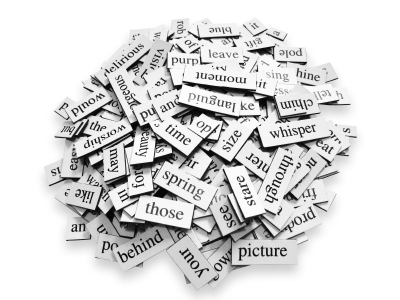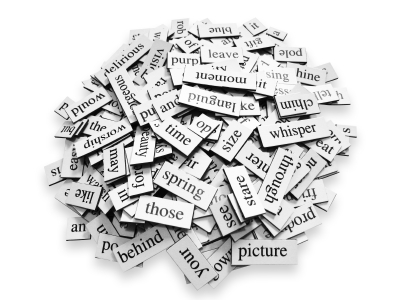22 Tips For Writing Effective Patient Statement Copy
August 23, 2012 •Brian Watson

 Writing copy for patient statements and letters presents a tricky proposition.
Writing copy for patient statements and letters presents a tricky proposition.
On the one hand, you want to make sure that you’re clear and comprehensive enough to get your message across.
But you also have to ensure statement readability by staying brief, simple, and narrowly to-the-point. And balancing the two ideas isn’t always as easy as it might seem.
We’ve been there, too. And, in working to craft an ideal compromise, have come up with a pretty robust set of patient statement copywriting best-practices.
Consider the following 22 tips your roadmap for writing effective, patient friendly, but-still-appropriately-concise statement copy that encourages patients to pay promptly.
1). Be Simple. Be as simple and direct in your sentence structure as possible. Subject-verb-object sentences are clear and to the point by necessity. And stringing several together creates a rhythm that makes text easy to read and understand.
2). And Specific. When it comes to patient statements processing, excessive copy often stands in the way of document effectiveness. Patients don’t want long, drawn-out descriptions; they want brass-tacks. Like what’s been paid by insurance, what do they now owe, for which services, and by when. Choose your words carefully. And make every one count.
3). Pick the Right Font. A typical rule of thumb when choosing fonts for print is that serif fonts (those with semi-structural details on the ends of letters) tend to be more readable, while sans-serifs (fonts without embellishments) are better for legibility.
4). For Both Body Copy and Headlines. The result is that, historically, headlines and sub-headlines tend to be written more often in sans-serif, while body text is more apt to be serif.
Whether you choose to go traditional with a serif type, or more modern with a sans-serif, your choice should have a strong track-record of legibility. Traditionally effective fonts include Times New Roman and Georgia on the serif side, and Helvetica, Arial, and Verdana as common san-serif options.
5). Use a Large Type Size. According to the Vision Counsel of America, nearly 65% of the adult population uses eyeglasses. And nearly 11 million Americans have an undiagnosed vision problem. To meet their patient billing expectations, you should ensure that all key instructions, billing details, and transactions are printed in as close to 12 point type as possible.
6). Go Bite-Size. Although the human brain can handle 40,000,000 pieces of information every second, only 40 of those are processed by our consciousness. The take away: effective patient statements and letters break-up groups of paragraphs (and even sentences) into bite-size, thin-slice, easily-processed chunks of information.
7). Use Small Words. Patients aren’t reading your statements and letters to be entertained. They want to be informed. And keeping things plain and clear-cut is the best way to go about that. Start by keeping words as short, simple, and plain-language as possible.
8). Short Sentences. According to research from the American Press Institute, readers understand 100% of a story when it contains sentences that average eight words or fewer. While that’s pretty brief, even 14 word sentences are understood by 90% of readers. On the other hand, only 10% grasped 43 word sentences.
So shoot for an average sentence length of around 15 words. Or surround longer descriptions with several shorter sentences for balance.
9). And Brief Paragraphs. And keep paragraphs to three sentences or less. It provides white space that enhances readability and keeps patients from being daunted by excessively large blocks of text.
10). Go Easy on the Commas. Commas are a useful part of sentence structure. But long sentences are harder for readers to understand. So if you find yourself with a sentence that uses several of them, you might want to consider turning your large sentence into a few smaller ones. Or by using dashes – which ups readability by making two parts of a sentence visually separate.
11). Add Lists. Bulleted lists are often some of the most viewed elements on a page. After all: which is easier to quickly scan and digest? A dense, knotty 150 word slab of text?
• Or quick, simple, bulleted points.
• That logically segment body text into bite-size pieces.
• So that you messaging is easy for patients to scan and understand in an instant?
12). Use Call-Out Boxes. Key information deserves extra attention. Whether it’s an account summary, payment due, or contact information, call-out boxes segment and separate; ensuring that important details don’t slip through the cracks.
13). And Colors. Colors have a powerful effect on attention. Use warm colors (like shades of red) to direct visual path to key text or elements. But use bold hues sparingly. Red is not only a powerful attention-grabber, it can also increase pulse and, according to recent research, even add to anxiety and distract from tasks.
14). Plus Graphics. In an increasingly visual world, icons and symbols are a great way to convey information without the use of words. Visual cues tapped previously learned conventions to simplify instructions and reduce copy. But don’t try to reinvent the wheel. Graphics should be universal enough to enable fast, easy comprehension.
15). Do a Little Jargon-Hunting. Advertising legend David Ogilvy once wrote “If you’re trying to persuade people to do something, or buy something, it seems to me you should use their language”.
Follow his lead. Unless you’re patient base is made up primarily of billing coders or healthcare professionals, there’s never a good reason to use jargon on your patient statements and letters. To ensure bill readability, eliminate technical language in favor of common, clear-language words and terms that have as close to universal resonance as possible.
16). Use an Inverted Pyramid. Patients aren’t wired to spend a lot of time reviewing their statements. All the more reason to avoid burying the lead. The most important information on a statement or letter should always be presented first, above the fold, followed by additional supporting details. And use a short introduction and even consider bolded type to ensure that you’re appropriately emphasizing the document's core message.
17). Write Conversationally. Patient statements are already formal enough without sounding overly stuffy or technical too. So write all copy in a conversationally, using an active voice, possessive pronouns, and common language.
18). And Empathetically. A friendly, informal, respectful writing style helps alleviate the tension and anxiety patients might feel when receiving a patient statement or letter. And it mimics the friendly, courteous way that your care providers and support staff would interact with them in a real-world situation.
19). Stress Ease-of-Payment. We’re all motivated by the idea of progress. The shorter the distance to the goal, the more encouraged we are to reach the finish line. It’s called the Goal-Gradient effect. Leverage that tendency by stressing how easy it is for your patients to make a payment.
Feature all the payment channels you offer – from in-person to EBPP – on your billing correspondence. And reinforce (through clear instructions and supporting copy) just how easy it is for patients to make a payment.
20). Edit. Copy complete? Work back through with an eye for detail: removing all text and elements that aren’t completely necessary. Remember: when it comes to transactional documents, brevity wins.
21). Then Test. What do your patients think? Collecting feedback from actual patients will help you identify any potential comprehension pitfalls. Use that knowledge to…
22). Edit Some More. With usability data in hand, add, subtract, or change your patient statement messaging to ensure that it’s as effective as it is patient friendly.
Having nailed the copywriting side of the equation, why no turn your attentions to smart, effective statement design best practices? Download our free whitepaper, Building a Better Bill: Why Good Statement Design Matters (And How You Can Get It) to learn how.
What other statement copywriting tips can you add to our list?
Get Updates
Categories
- Charity Care Management (1)
- Compliance (2)
- Customer Service (8)
- Digital Front Door (1)
- Direct Mail (6)
- eBilling (1)
- EBPP (34)
- ESL Statement (2)
- eStatement (1)
- Healthcare Channel Partner Billing (1)
- IVR (3)
- Mobile Payment (11)
- Online Billing and Payment (6)
- Online Patient Payment (17)
- Outsource Print Management (4)
- Paperless Billing (4)
- Patient Engagement (2)
- Patient Friendly Billing (21)
- Print and Mail (7)
- QR Codes (1)
- Quick Pay (7)
- Security (1)
- Self-Pay Patients (9)
- Self-Pay Revenue (4)
- Statement Design (32)
- Statement Print and Mail (1)
- Statement Printing and Mailing (28)
- Statement Processing (36)
- TransPromo (1)
- Up-Front Billing (1)

